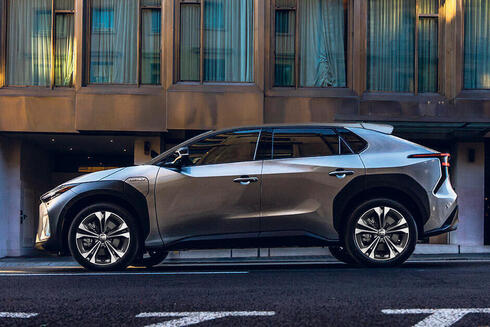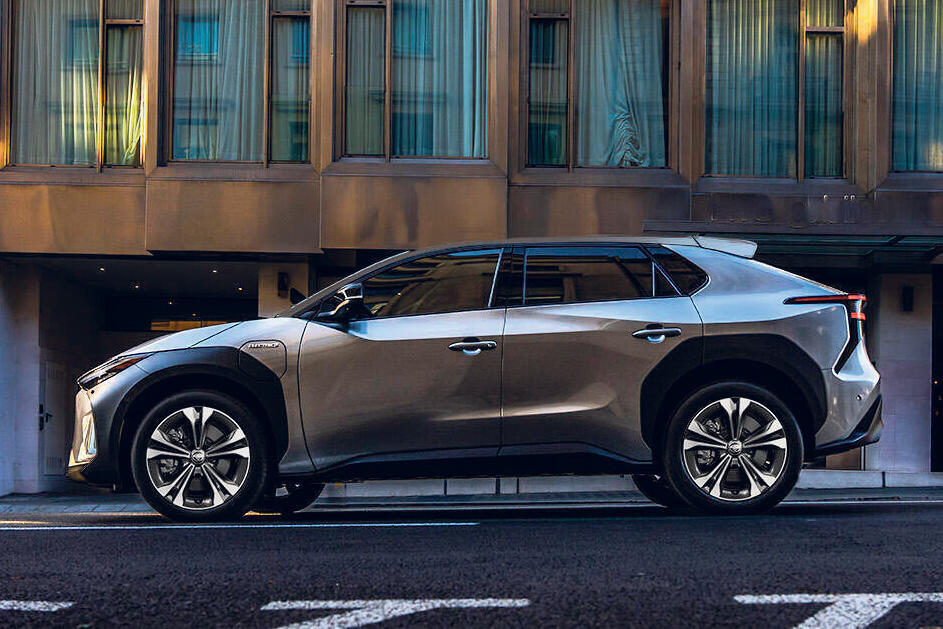
The sound of silence: Electric vehicle manufacturers innovating with sound
Manufacturers are being required to add sound to their cars for safety reasons, and are doing so creatively
Last week, car manufacturing giant Toyota announced that it will add two new features to its electric cars: a simulated gear stick and "noise" that simulates a combustion engine. Toyota explained that these new features are targeted at older drivers, who are used to a noisier and more manual driving experience, but are interested in joining the green revolution. While there is no functional reason to add a gear stick, the addition of "noise" is actually a mandatory safety standard in Europe and the U.S.
Electric cars emit zero carbon emissions and almost zero pollution, since charging and generating electricity are also pollutive activities. The cars not only don’t emit air pollutants such as carbon dioxide, but also sound pollution. Electric and hybrid cars emit one tenth of the noise that cars with an internal combustion engine emit. You can hear a unique hum when an electric car passes by, which does not come from the car itself but rather a sound file activated by the car's operating system. This is a legally mandated safety add-on designed to alert anyone located outside of the vehicle to its presence.
At high speeds there is no material difference between electric vehicles and those with an internal combustion engine; the wind, and friction from the wheels of the vehicle and the road produce noise of a similar nature and decibel. But at low speeds there is a fundamental difference between regular cars and electric vehicles, which are silent. At first, this was considered to be beneficial, mainly as a way to reduce noise that is increasingly present in urban life. However, it also is important for safety, as the sound signals whether the car is slowing down or accelerating. These are life-saving noises, especially when many people are using noise-canceling headphones, listening to podcasts, music and books.
Sound innovation
The lack of noise from electric cars contributes to their high rate of accidents. An electric car is 40% more likely to hit a pedestrian than a normal car. For the visually impaired population this number jumps to 93%. This issue was quickly recognized but it took more than a decade of hybrid and electric vehicles on roads to bring about a safety standard in Europe and the U.S. that requires producing a "minimum amount of noise.”
Where regulations are already enforced, electric cars are required to produce sounds ranging from 43 to 64 decibels when the vehicle is moving at a speed of less than 20 km/h. At these speeds, the regulators said, the noise from the tires and the road surface was minimal and unsafe. The decision to require sound production at a certain speed and under specific conditions came into force only two years ago, and also included the requirement that the sound indicate the "behavior of the vehicle" including acceleration or deceleration. The regulations didn’t specify what sound should be produced, launching a new race for innovation.
When Ford began the mass production of its vehicles at the beginning of the 20th century, it faced a problem: what to do after everyone who could afford a car had bought one? They came up with the idea of producing cars in different colors. Almost 100 years later, the technology giant Apple also started launching identical phones only in different colors. It worked for Ford, and it worked for Apple.
If color can be innovative, why not sound? And the car manufacturers really understood, or at least appreciated, that the sound emanating from the car can also differentiate them from one another and serve as a selling point. The noise of an engine, which used to be a symbol of an outdated car, connects us to the past and to the product. A futuristic white noise signifies something new, the likes of which have never been encountered before.
Tesla, for example, decided to produce a wide variety of warning sounds for pedestrians that drivers can select, including the music of an ice cream truck, applause, sheep's bleating and more. The American National Highway Traffic Safety Administration (NHTSA) required Tesla to fix this feature, called Boombox, claiming that it hindered pedestrians from recognizing warning sounds in the urban environment, which is polluted with sounds anyway. Tesla carried out a recall of about a million vehicles in 2020 as a result.
At the more mundane end of things, some unusual collaborations have been launched. BMW collaborated with Hans Zimmer, who composed, among other things, the soundtracks for the films Interstellar, Gladiator, and Dunkirk to create a unique sound signature for the company's vehicles. Jaguar worked for four years with American electronic musician Richard Devine to develop their own unique sound that cannot be heard from inside the vehicle itself. Audi used a unique mix of sounds produced by an electric fan through a metal tube, Verno enlisted Andrea Serra, an Italian producer and sound technician, to develop a unique sound in a secret project that began in 2012.
Lest we forget scooters
The problem of noise (or lack thereof) does not come only from electric cars, but from all electric mobility solutions. These include scooters as well as bicycles, which, unlike electric vehicles, are not required to include special sound safety features. A study carried out at the University of Salford in 2022 found that in an urban environment and with a noise of about 50 decibels, a pedestrian will detect the presence or approach of an electric scooter traveling at a speed of 20 km/h, when it is 4.9 meters away from him. In a louder environment of about 60 decibels (that is, if a car is just passing by), this figure drops drastically to 2.5 meters. In a noisy environment of this type, there is a 77% chance that the pedestrian will completely miss the approach of a scooter, compared to 29% in a quieter environment.
Despite all this, the advantages outweigh the disadvantages. A general silencing of large sound sources such as vehicles is welcome because it also allows horns, sirens and people to be quieter, who do not have to overcome the noise of car engines. Maybe if more and more electric vehicles take over the road, we'll be able to hear people talking, bicycles ringing and a car engine purring to a Hans Zimmer tune instead.














